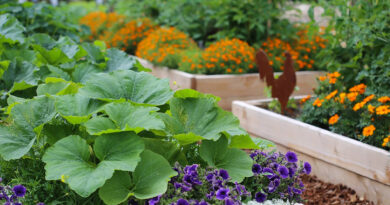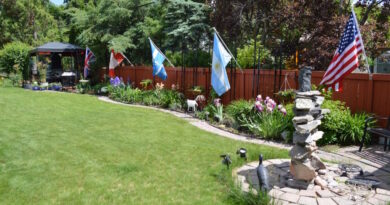When to Work the Garden Soil
Fall is an ideal time to work on improvements to the soil in your garden beds and to the garden itself. Starting in late August, you can lift your plants and move them about, and thus accomplish important changes in soil and garden design. By then, most of summer`s flowers are past the blooming stage and the plants have gone into dormancy. This will be the best time to move them with minimal risk.
Start with soil improvement. A simple option is to mix organic compost or decaying leaves and grass into the soil. This is to replenish it with needed nutrients and in particular to help break down heavy, packed clay, so that water can reach the plants’ roots and also drain readily away. Particularly if you have heavy soil, that work can pay off in healthier, more robust plants in the coming growing season.
With a bit of extra effort you can raise the soil level to further improve the drainage. You simply add soil to build up the garden bed. Fifteen cm to 20 cm (six to eight inches) of new soil (a mix of topsoil, compost and pete is ideal) will do the job nicely.
The first step is to carefully lift and set aside the plants. Their main flowering period should be finished. Clean up the bed and pile on the new soil material, lightly compressing it. The raised soil can be steeply sloped, with a narrow channel dug around the edge to keep the grass at bay.
After this, return the plants to the bed gently spreading the roots. Water thoroughly but do not fertilize. The plants should readily adapt to their refurbished home.
Continue to water the plants, as required.
With their improved growing conditions, The plants should return next spring more robust and healthy than ever.
Meanwhile, though, when you dig up your plants, another opportunity presents itself. Here is a chance to move plants around. Perhaps making the garden bed fresh and interesting again. It’s a second chance to get plants in the right pecking order. Try grouping according to their height, or achieve interesting contrasts in foliage. You might want to cut back the daylilies so they don`t dominate the garden, or divide the phlox so that it more quickly multiplies, providing the mass of colour you’ve longed for. Or to put in a tall ninebark, for background colour of deep purple.
This isn’t a raised garden, such as you shape with garden stone. The stone frames the bed; often the purpose of the stone wall is to put the soil within easy reach of the gardener.






